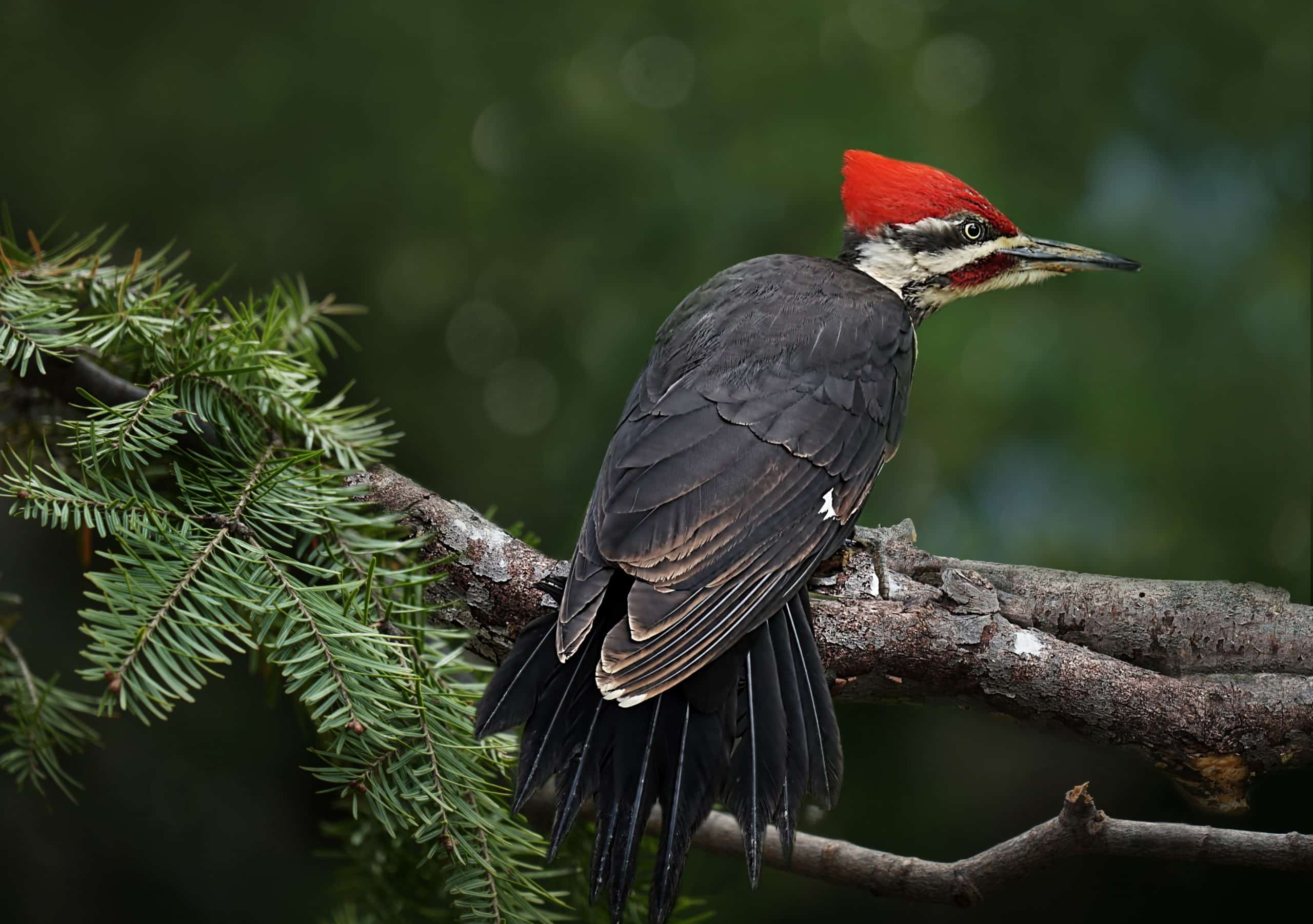Woodpeckers Unleashed: Exploring the Marvels of These Proficient Tree Climbers
Woodpeckers, with their unique markings and rhythmic drumming resembling with wooded areas, hold an unique place in the bird world - Woodpeckers in Florida. As we dive right into the intricate details of woodpeckers' nesting practices, feeding techniques, and the ongoing preservation initiatives to protect these amazing birds, a much deeper admiration for their area in nature unravels.
Makeup and Adaptations
When checking out the anatomy and adjustments of woodpeckers, one can observe amazing functions that make it possible for these birds to flourish in their specialized environmental particular niche. Additionally, woodpeckers have zygodactyl feet, with 2 toes dealing with ahead and 2 dealing with in reverse, giving a firm hold on tree trunks while they browse for food or drum for communication.
Moreover, woodpeckers have a special tongue structure that is long, barbed, and sticky, enabling them to draw out pests from holes in wood. This customized adjustment permits woodpeckers to exploit a food resource that is inaccessible to lots of various other bird types. In general, the makeup and adaptations of woodpeckers display the remarkable transformative services that have enabled these birds to flourish in their arboreal habitat.
Drumming Habits
Having explored the composition and adaptations of woodpeckers, the emphasis currently moves to comprehending their drumming habits, a distinctive facet of their communication and territorial display screens. Drumming is a crucial kind of interaction among woodpeckers, serving several objectives such as developing areas, drawing in companions, and signaling alarm. Each woodpecker types has an unique drumming pattern that helps individuals acknowledge participants of their very own types and distinguish them from competitors or killers.
Woodpeckers create drumming sounds by rapidly pecking on resonant surfaces such as dead trees, utility poles, and even metal things, producing a series of balanced beats. The intensity and speed of drumming can vary based on the objective; for instance, a quick drumming sequence might represent hostility in the direction of trespassers, while a slower and softer drumming pattern could show courtship (Woodpeckers in Florida). In addition, woodpeckers may change the regularity and duration of their drumming to share particular messages effectively
Nesting Practices
Discovering the nesting routines of woodpeckers reveals fascinating understandings into their reproductive habits and habitat selections. Woodpeckers are known for their distinct nesting preferences, commonly digging deep into dental caries in trees to create sheltered spaces for raising their young. These cavities serve not just as a nesting website yet additionally as a secure refuge from killers and inclement weather condition.
Woodpeckers display a high level of fidelity to their nesting sites, often returning to the same location year after year. Click This Link This behavior highlights the importance of suitable habitat accessibility for their reproductive success. The selection anonymous of a nesting site is crucial for woodpeckers, with factors such as tree varieties, height, and degeneration phase playing considerable functions in their decision-making process.
Interestingly, some woodpecker species are recognized to dig deep into multiple tooth cavities within their territory, giving themselves with alternative nesting alternatives. This approach might function as a form of insurance policy versus potential threats or disruptions to their main nesting site.

Feeding Methods
Woodpeckers employ a variety of specialized feeding methods to acquire their key food sources. One of one of the most distinct feeding behaviors of woodpeckers is drumming, which involves fast pecking on trees to discover bugs under the bark. This drumming not just helps them locate victim yet also works as a way of communication with various other woodpeckers. Woodpeckers have strong, chisel-like beaks that enable them to pierce right into timber easily. As soon as an opening is produced, they utilize their lengthy, barbed tongues to draw out bugs such as ants, beetles, larvae, and crawlers. These tongues are covered with sticky saliva that assists catch the target. Woodpeckers are additionally recognized to dig deep into dental caries in trees to access surprise insect larvae or sap. Some varieties, like the acorn woodpecker, shop nuts in particularly developed openings called granaries. This critical keeping of food assists them make it through during food shortage periods. Woodpeckers are really remarkable in their feeding techniques, showcasing adaptability and knowledge in acquiring their nourishment.
Preservation Initiatives
In the middle of the elaborate feeding strategies displayed by woodpeckers, the conservation initiatives targeted at securing these fascinating birds play a critical duty in protecting their habitats and populaces. Woodpeckers deal with various risks to their survival, including environment loss because of deforestation, environment change modifying their ecological communities, and crashes with manufactured structures such as structures and vehicles - Woodpeckers in Florida. Preservationists are actively working to deal with these challenges and guarantee the long-lasting wellness of woodpecker species

Education and learning and public understanding campaigns are additionally crucial elements of woodpecker preservation initiatives. By increasing awareness concerning the significance of these birds in maintaining healthy woodland ecological communities, guardians can garner assistance for habitat preservation initiatives and promote responsible land management techniques. Via collective efforts in between researchers, policymakers, and regional communities, we can collaborate to protect a future where woodpeckers grow in their natural environments.
Conclusion

Comments on “Discovering Woodpeckers in Florida: Variety Diversity and Nature”